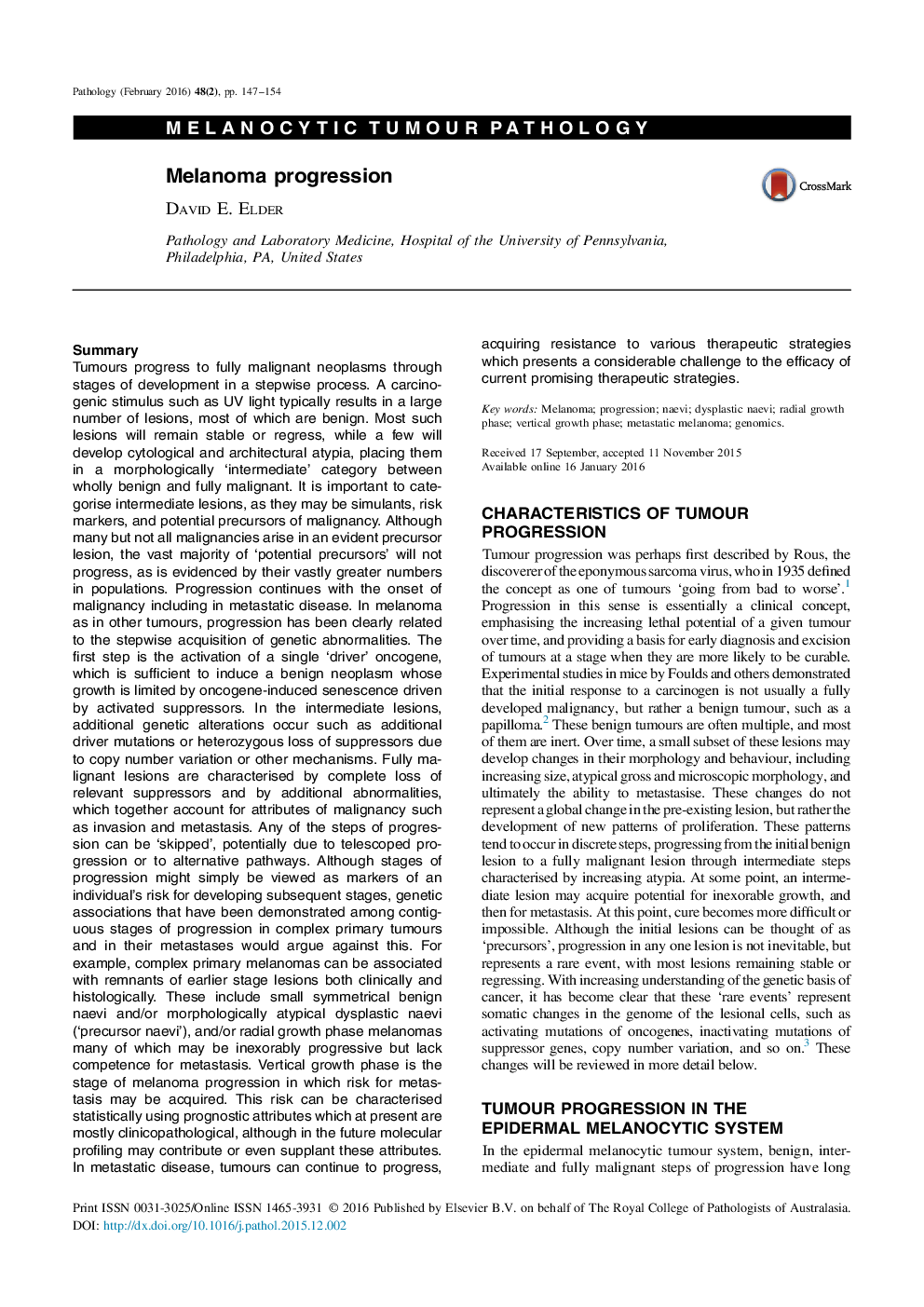| کد مقاله | کد نشریه | سال انتشار | مقاله انگلیسی | نسخه تمام متن |
|---|---|---|---|---|
| 104530 | 161477 | 2016 | 8 صفحه PDF | دانلود رایگان |
SummaryTumours progress to fully malignant neoplasms through stages of development in a stepwise process. A carcinogenic stimulus such as UV light typically results in a large number of lesions, most of which are benign. Most such lesions will remain stable or regress, while a few will develop cytological and architectural atypia, placing them in a morphologically ‘intermediate’ category between wholly benign and fully malignant. It is important to categorise intermediate lesions, as they may be simulants, risk markers, and potential precursors of malignancy. Although many but not all malignancies arise in an evident precursor lesion, the vast majority of ‘potential precursors’ will not progress, as is evidenced by their vastly greater numbers in populations. Progression continues with the onset of malignancy including in metastatic disease. In melanoma as in other tumours, progression has been clearly related to the stepwise acquisition of genetic abnormalities. The first step is the activation of a single ‘driver’ oncogene, which is sufficient to induce a benign neoplasm whose growth is limited by oncogene-induced senescence driven by activated suppressors. In the intermediate lesions, additional genetic alterations occur such as additional driver mutations or heterozygous loss of suppressors due to copy number variation or other mechanisms. Fully malignant lesions are characterised by complete loss of relevant suppressors and by additional abnormalities, which together account for attributes of malignancy such as invasion and metastasis. Any of the steps of progression can be ‘skipped’, potentially due to telescoped progression or to alternative pathways. Although stages of progression might simply be viewed as markers of an individual's risk for developing subsequent stages, genetic associations that have been demonstrated among contiguous stages of progression in complex primary tumours and in their metastases would argue against this. For example, complex primary melanomas can be associated with remnants of earlier stage lesions both clinically and histologically. These include small symmetrical benign naevi and/or morphologically atypical dysplastic naevi (‘precursor naevi’), and/or radial growth phase melanomas many of which may be inexorably progressive but lack competence for metastasis. Vertical growth phase is the stage of melanoma progression in which risk for metastasis may be acquired. This risk can be characterised statistically using prognostic attributes which at present are mostly clinicopathological, although in the future molecular profiling may contribute or even supplant these attributes. In metastatic disease, tumours can continue to progress, acquiring resistance to various therapeutic strategies which presents a considerable challenge to the efficacy of current promising therapeutic strategies.
Journal: Pathology - Volume 48, Issue 2, February 2016, Pages 147–154
